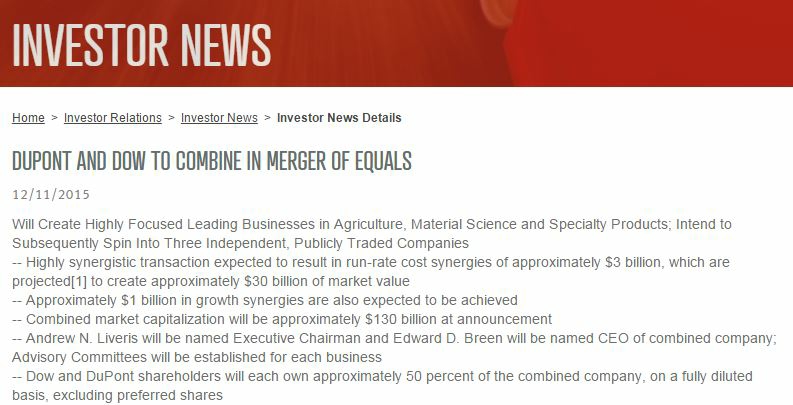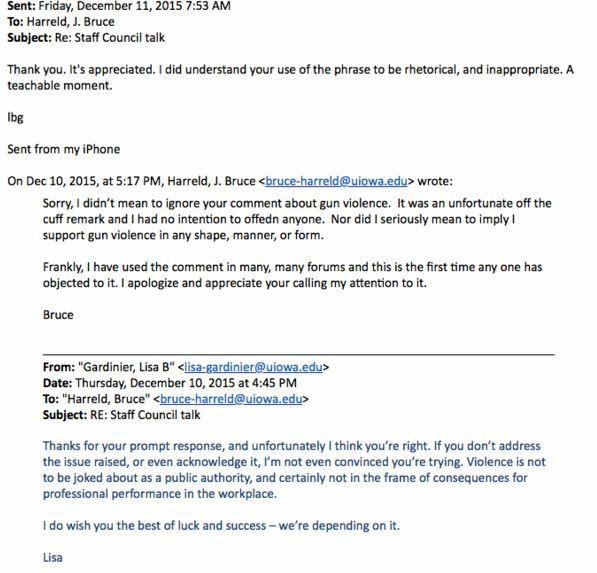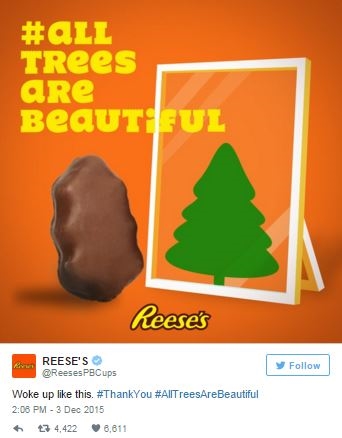Ted Cruz on Hot Seat for Campaign Funds from GS
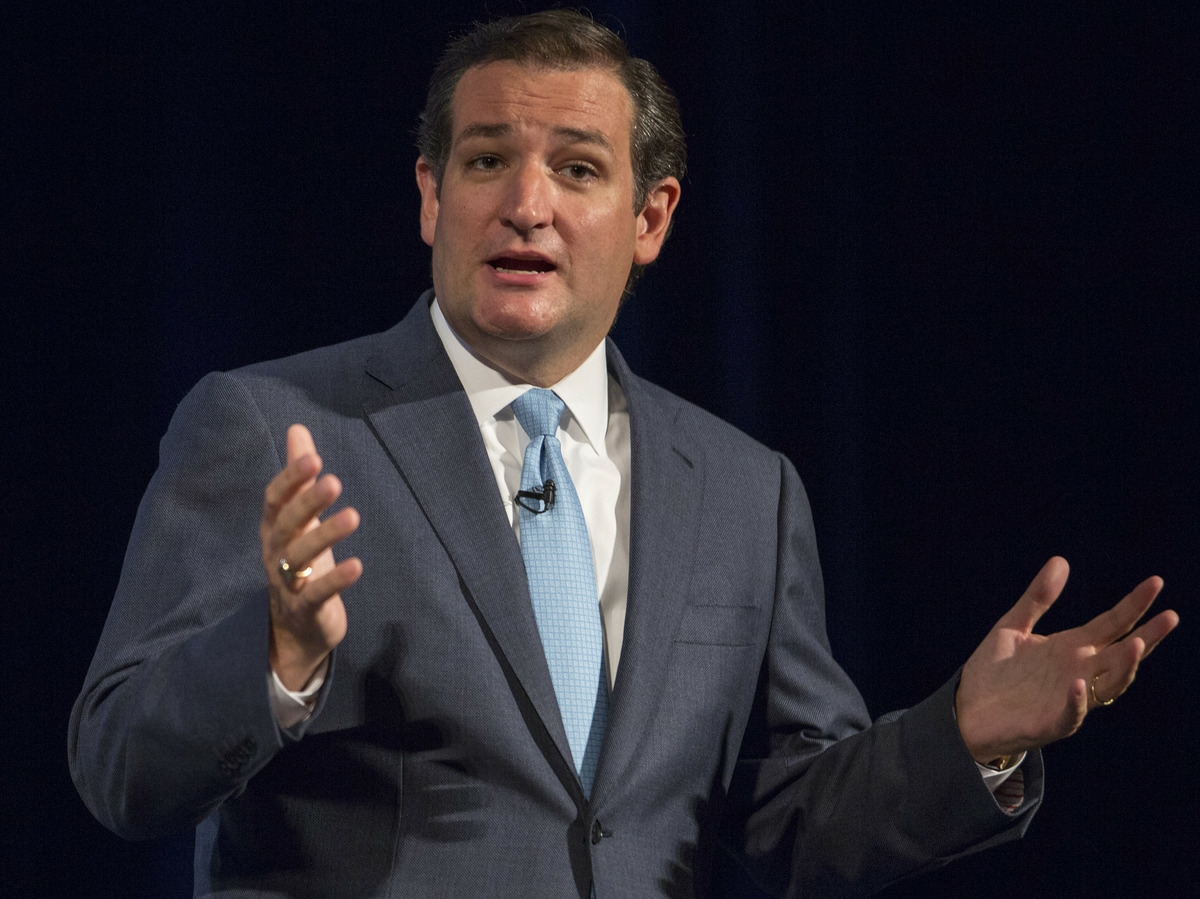 Republican presidential candidate Ted Cruz didn't disclose a loan he received from Goldman Sachs for his campaign. He was a managing director at the investment bank before taking a leave to run for president.
Republican presidential candidate Ted Cruz didn't disclose a loan he received from Goldman Sachs for his campaign. He was a managing director at the investment bank before taking a leave to run for president.
Campaign rules dictate that candidates reveal all sources of income for a bid for office, including loans. He received between $250,000 and $500,000 from GS as a low-interest loan at the start of his campaign. Cruz's campaign is trying to explain the failure as "inadvertent" (I was waiting for "an oversight"), saying that he did disclose a money market account that included the GS loan and another from Citibank.
Particularly troubling for Cruz is the contrast between this news and how he presented himself and his wife. He spoke in interviews about their decision to use all of their liquid savings, about $1 million, for his campaign. Yesterday, The Wall Street Journal quoted Cruz saying he wouldn't bail out "rich Wall Street banks." As the candidate tries to distance himself from Wall Street, his ties are closer than he admits.
A New York Times article also questions whether the decision with his wife happened as he described it (that she immediately agreed) and whether they did, in fact, use all of their assets:
During 2012, they sold securities worth $82,000 to $355,000, and the value of other holdings was reduced by, at most, $155,000. . . All told, the value of their cash and securities in 2012 saw a net increase of as much as $400,000 - even as the Cruzes were supposedly liquidating everything to finance Mr. Cruz's Senate campaign."
Discussion Starters:
- Is this nit picky, or does Ted Cruz has some real explaining to do?
- How, if at all, do you think this will affect Cruz's campaign? Marco Rubio and Hillary Clinton also faced financial questions, yet the criticism seems to have blown over.
- What else, if anything, should the Cruz campaign say at this point? Should Cruz issue a statement himself?
Another Call for Hope in Obama's Last SOTU
President Obama's presidency came full circle in his last State of the Union (SOTU) address. The speech was not without humor. The president began by promising to keep it short, so people could get back to Iowa for more campaigning. (Transcript)
As expected, the president highlighted accomplishments from his administration and laid out plans for the future. The speech sounded optimistic, which of course, was the theme of his first presidential campaign. He ended this way:
That's the America I know. That's the country we love. Clear- eyed, big-hearted, undaunted by challenge, optimistic that unarmed truth and unconditional love will have the final word. That's what makes me so hopeful about our future.
I believe in change because I believe in you, the American people. And that's why I stand here, as confident as I have ever been, that the state of our Union is strong.
 The audience reaction is typical and always baffles me: Republicans don't support anything a Democratic president says, and the opposite happens when we have a Republican president. It's strange to me when the President makes some points that, surely, everyone agrees with. Early on, he says, "First, how do we give everyone a fair shot at opportunity and security in this new economy?" The camera is on Marco Rubio, who sits stoically in non-response. Doesn't he support opportunity for everyone?
The audience reaction is typical and always baffles me: Republicans don't support anything a Democratic president says, and the opposite happens when we have a Republican president. It's strange to me when the President makes some points that, surely, everyone agrees with. Early on, he says, "First, how do we give everyone a fair shot at opportunity and security in this new economy?" The camera is on Marco Rubio, who sits stoically in non-response. Doesn't he support opportunity for everyone?
As usual, major newspapers showed their political bent in reporting on the SOTU. The Wall Street Journal ran a secondary headline on the front page with the title, "GOP Candidates Contrast Obama's Speech With Their Own Aims." The Journal showed additional stories under the "Politics" heading further down on the site, shown here.
In contrast, The New York Times ran the story as the main headline of the day with the title, "Obama Offers Hopeful Vision While Noting Nation's Fears," and ran more stories, including opinions, with positive titles about the speech.
Discussion Starters:
- What do you consider to be the highlights of President Obama's speech?
- Look at the audience's reactions. What's your view of the convention I mention above: how does the non-response serve each side?
The #$@&%*! Golden Globes
I cut the cable cord three years ago, so I missed all of the cursing during the Golden Globes, but the language is making headlines. Comedian Amy Schumer set the stage with the first cuss word of the night (beginning with a C), according to Daily Mail, "just minutes after the show got underway."
Host Ricky Gervais continued the evening with his usual vitriol, despite saying several times,"I'm going to be nice tonight," which of course, no one expected or wanted. He started his opening monologue, drinking a glass of beer, by telling the crowd to "Shut up." In about seven minutes, Gervais insulted Caitlyn Jenner, Jeffrey Tambor, Roman Polanski, Jennifer Lawrence, and the film companies in general. The worst insults flew to Mel Gibson later on.
The F-bombs continued throughout show, leading an LA Times writer to conclude , "The hardest-working person at Sunday night's Golden Globes ceremony may have been whoever was in charge of the bleep button."
Gervais also advised the actors who would receive awards, "Don't get emotional. It's embarrassing. Okay? That award is, no offense, worthless." Some of the more emotional speeches of the night were from Lady Gaga, Denzel Washington, and Sylvester Stallone.
Discussion Starters:
- What's your view of the profanity in the Golden Globes? Did it add to or detract from the night?
- How does Gervais's opening monologue differ from roast speeches? Consider a few examples and compare the purpose, audience, and setting.
- Do you share Gervais's opinion that people shouldn't "get emotional"? What would you advise people who accept awards?
ESPN Forgets to Identify Social Media Ads
The Federal Trade Commission's guidelines are clear: when people are paid to write social media posts that relationship must be disclosed. This applies to company employees. Two incidents this week show companies skirting those rules.
ESPN employees tweeted about Dominos, but didn't disclose their relationship to ESPN. By law, the tweets should include #ad or #spon to identify a sponsored ad.
ESPN responded to a request by Deadspin, calling the tweets an "error":
ESPN says this is all a mistake and that future tweets associated with Domino's ad buy with the network will be compliant with federal law. Which is fine, though we're still skeptical that New Year's Eve means either college football or pizza-and so were the millions of fans who didn't tune in for this year's college football playoff games.
Yet, a couple of days later, an ESPN journalist tweeted another advertisement. The company has argued that journalists aren't paid endorsers, and a Wall Street Journal article explains, "the issue of whether [ESPN's] roster of pundits and anchors are journalists guided by traditional editorial strictures or entertainers allowed to hawk products has been a thorny one for some time." However, Deadspin argues that Schefter and Mortensen are clearly "personalities," and the connection to the brand is clear.
This issue isn't new. The FTC admonished Cole Han for promotions on Pinterest, and I'm sure others have been caught.
Discussion Starters:
- We could argue that identifying ads is just a technicality. Some accuse the FTC of being too snarky about social media posts. What's your opinion on the issue?
- Would a hashtag identifying the posts as ad change your perspective on the post? How do you think fans would be influenced either way?
Diversity Programs May Do More Harm Than Good
An HBR article warns that corporate diversity programs may hurt organizations more than help. This is no real surprise given previous literature and jokes like "Diversity Training Day" in the TV show The Office. In this episode, Michael Scott is his usual foolish self, and everyone is just angry.
The article claims that diversity programs have little effect on demographic diversity within an organization; that is, the number of women and people of color doesn't increase, and one study showed a loss of black women in employee representation. The authors write, "extolling the values of diversity and trying to train employees to value it may not convince minorities and women that they will be treated well, and may not increase their representation in the workforce."
One danger of diversity programs is that companies use their existence as evidence of non-discrimination in court cases. I recall working for a large company in New York City that insisted on communicating policies and conducting training for this very reason: just having the programs in place is part of a defensive legal strategy and may make individual managers more responsible for discrimination instead of the company.
According to the studies by the authors, diversity initiatives negatively impact white males: "pro-diversity messages signaled to these white men that they might be undervalued and discriminated against." Similarly, "Groups that typically occupy positions of power may feel alienated and vulnerable when their company claims to value diversity."
From my perspective, diversity isn't a statement or a training program; it's a way of life. This is difficult to put on paper or teach in a classroom.
Discussion Starters:
- What has been your experience with diversity programs? In what ways have you found them useful or damaging?
- How would you advise managers to create a more inclusive working environment? Consider the discussion in Chapter 2 in the textbook and your own thinking about today's workplace.
Thai Ads Pull at Heartstrings
A Wall Street Journal article highlights Thai commercials so emotional that people daring each other not to cry has become a "digital spectator sport." A YouTube description for one video reads, "You Too Will Cry After Watching This... 95% People Cry." The commercials have inspired videos of people watching them, trying not to cry. A video of "Deadlox" garnered more than 256,000 views.
Thanonchai Sornsriwichai creates short films (between 3 and 10 minutes) to sell insurance, phones, food, and other goods. The videos are mini-movies with a dramatic story. In "Silence of Love," a daughter with an angry father tries to commit suicide. The message is to "Remember to care for those who care for you"; in other words, buy life insurance.
With 27 million views, another ad for life insurance, "Unsung Hero," is Thanonchai's highest ranking.
Using pathos or emotional appeals to persuade is nothing new, but this video genre is gaining traction. Advertisers say these film shorts compete with TV ads and capitalize on social media. An executive at Ogilvy & Mather in Bangkok calls them "media events." Of course, videos about the videos increase the number of viewers, and tagging the no-cry challenge onto a film makes it go viral.
Discussion Starters:
-
Describe the value of using pathos in a persuasive argument. What aspects do these films use effectively?
-
On the other hand, what are the risks? For example, could people feel duped at the end? How do advertisers avoid this potential reaction?
Does Anyone Read Privacy Policies?
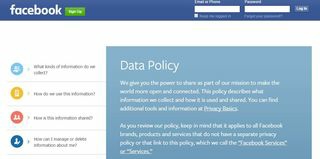 A Wall Street Journal article describes how some progressive Internet companies are simplifying language in their privacy policies. Although most of us click through and "accept" policies to get to the page we want, some read them carefully. Increasing concerns about data use and information sharing has affected how people use some sites. According to a Pew study, most mobile app users didn't download at least one app because of personal information that would be collected.
A Wall Street Journal article describes how some progressive Internet companies are simplifying language in their privacy policies. Although most of us click through and "accept" policies to get to the page we want, some read them carefully. Increasing concerns about data use and information sharing has affected how people use some sites. According to a Pew study, most mobile app users didn't download at least one app because of personal information that would be collected.
The article further explains the move towards plain language:
"The effort to simplify privacy policy language is a response to public suspicion of opaque policies and the collection of ever more data, said Fatemeh Khatibloo, a Forrester Research Inc. analyst who studies privacy. Some companies "are finally getting on board with the idea that privacy - and how they use our data - is closely tied to trustworthiness," she said. In addition, they're trying to write policies that will be viewed favorably in Europe, which has set a higher bar than the U.S. for what counts as consent to use personal data."
A good example of a privacy policy is from the Plain Language Institute. This group's mission is to improve government communications. However, the Plain Language website is simple, and the group doesn't benefit from sharing information. Pinterest, Facebook, and other social media sites need to collect user data to improve user experience and garner advertising revenue.
This reminds me of our U.S. tax code: it's complex. Trying to simplify information too much may not serve users in the end.
We know that Facebook has struggled with its privacy policy since the network's inception. People never seem happy with it, and continuous changes to the policy and settings frustrate everyone.
Discussion Starters:
- Look at a few privacy policies for your favorite websites. How easily do you understand what's written?
- Compare policies for static sites, such as news portals, and interactive sites, such as social networks. What additional information are the social networks trying to cover?
Twitter Updates Rules Again
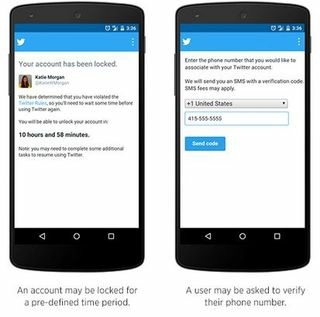 After criticism that Twitter needs to do more to prevent ISIS from recruiting and spreading hate, the company has updated its site rules. ISIS managed more than 46,000 Twitter accounts between September and December of 2014. Twitter rules are categorized as Content Boundaries and Use of Twitter, Abusive Behavior, and Spam.
After criticism that Twitter needs to do more to prevent ISIS from recruiting and spreading hate, the company has updated its site rules. ISIS managed more than 46,000 Twitter accounts between September and December of 2014. Twitter rules are categorized as Content Boundaries and Use of Twitter, Abusive Behavior, and Spam.
According to Reuters, Twitter "previously used a more generic warning that banned users from threatening or promoting 'violence against others.'" The new rules should make reporting and blocking new accounts easier. Under the subheading "Hateful Conduct," the rules specify,
"You may not promote violence against or directly attack or threaten other people on the basis of race, ethnicity, national origin, sexual orientation, gender, gender identity, religious affiliation, age, disability or disease."
In a blog post describing the change, Megan Cristina, Twitter's director of trust and safety, writes, "Keeping users safe requires a comprehensive and balanced approach where everyone plays a role." Cristina also explains, "We believe that protection from abuse and harassment is a vital part of empowering people to freely express themselves on Twitter."
Discussion Starters:
- Read Cristina's blog post. How well does she describe the change and Twitter's ongoing commitment?
- Is the company doing enough? How much responsibility should Twitter have for "hateful conduct" on its site?
Resume Heat Map: How Recruiters Spend Their Six Seconds
TheLadders tracked recruiters' eye movements when reviewing resumes. Using a heat map, we can see what this group looked at in the mere six seconds they spent reviewing your life's work.
Business Insider posted a video explaining the results. The biggest lesson is that your current and previous positions and education should be clear and easy to see. White space and font size matter.
What can we learn from the results?
- Recruiters scan the name and then current and previous jobs. Jobs should be prevalent under a section called Professional Experience or Work Experience. The results reinforce that you should highlight positions clearly with font enhancements, such as bold type. Also, this may be another case for taking positions with well-known companies. Then, consider how easily your position title can be read.
- Education was the next section scanned in the resume. Again, the name of a school and degree should be prominent in this section.
- What about other skills, volunteer work, etc.? These should still be included for the next round of the selection process: a second screen or an interview. But, as we already know, these can be placed at the bottom of the resume and shouldn't take up too much space. If you're debating between including your model airplane hobby and providing a bit more white space and a longer font, I'd go with the latter.
Discussion Starters:
- How can a recruiter assess your qualifications in just six seconds? Try to explain this from a hiring manager's perspective.
- What does this heat map tell you about your own resume? What changes will you make as a result?
Ted Cruz's Daughters as Monkeys: "Fair Game"?
The Washington Post has retracted a cartoon depicting presidential candidate Ted Cruz's children as monkeys.
The cartoonist, Pulitzer Prize winner Ann Telnaes, defended her cartoon:
There is an unspoken rule in editorial cartooning that a politician's children are off-limits. People don't get to choose their family members so obviously it's unfair to ridicule kids for their parent's behavior while in office or on the campaign trail- besides, they're children. There are plenty of adults in the political world who act childish, so there is no need for an editorial cartoonist to target actual children.
I've kept to that rule, except when the children are adults themselves or choose to indulge in grown-up activities (as the Bush twins did during the George W Bush presidency). But when a politician uses his children as political props, as Ted Cruz recently did in his Christmas parody video in which his eldest daughter read (with her father's dramatic flourish) a passage of an edited Christmas classic, then I figure they are fair game.
However, The Post editor Fred Hiatt disagreed:
It's generally been the policy of our editorial section to leave children out of it. I failed to look at this cartoon before it was published. I understand why Ann thought an exception to the policy was warranted in this case, but I do not agree.
The controversy may have given Cruz's campaign a nice Christmas jolt: so far, his family video has been watched more than 1.7 million times.
Is any publicity good publicity? That hasn't always held true on social media, but in this case, it's working in the candidate's favor.
And because it's Christmas, I'm reminded of Mike Huckabee's video in 2007. Some didn't appreciate the rather obvious window-pane-as-cross.
Discussion Starters:
- What's your view? Was the cartoonist justified in including Cruz's children?
- Was The Washington Post editor right? Should he have defied the cartoonist's position?
Best Graphics of 2015
 Bloomberg Business selected its favorite graphics from 2015. My favorites are still the bubble charts, if only because they are easy for students to create. Microsoft explains how to create bubble charts in Excel here.
Bloomberg Business selected its favorite graphics from 2015. My favorites are still the bubble charts, if only because they are easy for students to create. Microsoft explains how to create bubble charts in Excel here.
As is typical, this example shows different colors as variables and different sizes for, in this case, how many millions Swiss banks paid in penalties. (If you're wondering, BSI SA paid the most: $211 million.)
The New York Times also published its list of best graphics from 2015, including this interactive visual showing the impact of the recession on 255 industries.
Discussion Starters:
- Create a bubble chart with Microsoft's instructions. You'll also find YouTube videos to help. How does it turn out? For what type of information or presentation would you choose this chart option?
- Look at the detail behind the recession visual: so much information in one graphic! Do you find it useful, overwhelming, or something in between? What's the best way to navigate a visual like this?
Behind the Scenes of Caitlyn Jenner's Announcement
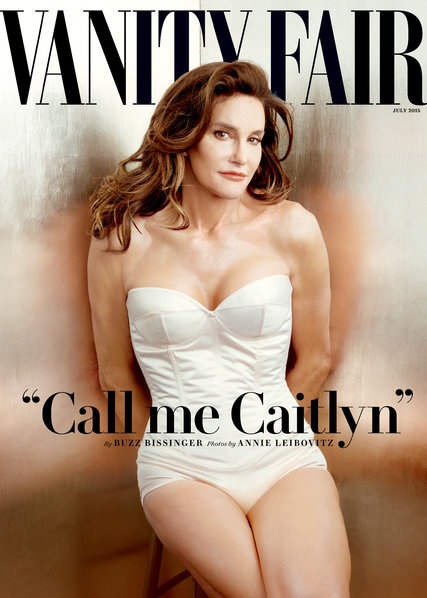 It's hard enough for companies to announce organizational changes, but Caitlyn Jenner had a real challenge ahead of her. An interesting New York Times article describes the publicist and process behind Caitlyn Jenner's announcement that she is transgender and planned to transition.
It's hard enough for companies to announce organizational changes, but Caitlyn Jenner had a real challenge ahead of her. An interesting New York Times article describes the publicist and process behind Caitlyn Jenner's announcement that she is transgender and planned to transition.
Alan Nierob managed her announcement but prefers to stay out of the limelight himself. What's useful for business communicators is to understand his decision process: what was the best way for Jenner to announce her transition? Here are the options described in the Times article:
- "Keeping Up With the Kardashians": At the time, Jenner was on this E! television show, but Neirob worried it would look too "self-serving," and they questioned the loyalty of the family and network to represent the story well.
- Interview with NBCUniversal: Nierob rejected this plan as too corporate and seemingly financially motivated.
- Interview with Diane Sawyer of ABC News: Nierob trusted Sawyer and ultimately chose this as one of the options.
- Interview with Vanity Fair: This was Neirob's additional plan for people to understand Jenner's life and to see glamorous photos.
Reporters seem to respect Nierob's work. Here's a great description of an alternative to saying "no comment," which typically doesn't go over well. This is Nierob's response to questions about Mel Gibson's "blaming Jews for all the world's wars"(!):
"What I remember," said Jeff Jensen, a reporter for Entertainment Weekly assigned to write about Mr. Gibson's saga, "is that Alan respected our inquiry without participating. It was like: ‘I know this is a story, I know you have a job to do, and I wish you well, but I can't help, and Mel won't comment.' It was incredibly gracious and professional. He did his job for his client while showing respect for mine."
Discussion Starters:
- How could an interview with NBCUniversal look "corporate"? Explain how this might be perceived and how it could reflect negatively on Jenner.
- What if Jenner had described her transition on the Kardashian show? Describe potential positive and negative outcomes.
- Why is "no comment" a poor response to a reporter's question? What alternatives could work better?
12 "Synergies" Too Many in DuPont-Dow Announcement
The DuPont-Dow merger is big news with a big press release and two extremely long quotations. The statement uses "synergies" or "synergistic" 12 times.
PR Daily criticizes the release as "jargon laden" and presents as evidence this 140-word (not character) statement from the chairman and CEO of Dupont:
"This is an extraordinary opportunity to deliver long-term, sustainable shareholder value through the combination of two highly complementary global leaders and the creation of three strong, focused, industry-leading businesses. Each of these businesses will be able to allocate capital more effectively, apply its powerful innovation more productively, and extend its value-added products and solutions to more customers worldwide," said Edward D. Breen, chairman and chief executive officer of DuPont. "For DuPont, this is a definitive leap forward on our path to higher growth and higher value. This merger of equals will create significant near-term value through substantial cost synergies and additional upside from growth synergies. Longer term, the three-way split we intend to pursue is expected to unlock even greater value for shareholders and customers and more opportunity for employees as each business will be a leader in attractive segments where global challenges are driving demand for these businesses' distinctive offerings."
A close second, Dow's leader offered his own 111-word statement, which I'll refrain from pasting here. (You get the point from the first one.)
The press release follows the format of other, newer versions, which provide a bulleted list of main points up front for busy journalists. The headings also work well for skim-value.
Of course, the bigger issue may be the business decision itself. Steven Davidoff Solomon, professor of law at the University of California, Berkeley, questions a merger with a planned spinoff. He cites lots of research to tell us that spinoffs don't work in the long-run.
Discussion Starters:
- How could you simplify the press release? Try to omit all 12 instances of synergy/synergistic.
- An argument can be made that this is intended for a more technical audience of investors who expect jargon. What do you think?
Apology for "Should Be Shot" Comment
The University of Iowa president Bruce Harreld has apologized for using the expression "should be shot," in this case, referring to faculty who are unprepared. An email exchange between the president and a librarian shows a respectful interaction but indicates a reluctant apology.
The librarian, Lisa Gardinier, initiated a long email, calling his use of the term "flippant" and "horrifying and unacceptable" given "the tense atmosphere of racist law enforcement violence." She also criticized his "rambling, unfocused" talk-a bit harsh, in my view, but I don't have to listen to him.
Clearly, Harreld isn't happy to hear from Gardinier, but starting a sentence with "frankly," could indicate the opposite. It's like saying "honestly"; what's the alternative?
Later, Harreld denied saying "they should be shot" but admitted saying, "I have learned the hard way that if I ever walk into a classroom without a teaching plan, I should be shot."
As usual, this criticism is not in isolation. People were unhappy with Harreld's appointment because of his business background and questions about the hiring process.
Discussion Starters:
- Read the entire email exchange, starting with Gardinier's first email. How does she successfully explain her argument? Where does her email fall short?
- Should Harreld have apologized sooner and more clearly? Why or why not?
- What's your view of the expression "should be shot"? Should it be avoided, or is it just a harmless expression?
- Does the use of "they" or "I" make a difference?
iPhones Cause an iHunch
 A New York Times article by Amy Cuddy warns us about physical harm caused by the iPhone. Cuddy says our posture is taking a hit because of hunching over the phone, dubbed the iHunch by New Zealand physiotherapist Steve August.
A New York Times article by Amy Cuddy warns us about physical harm caused by the iPhone. Cuddy says our posture is taking a hit because of hunching over the phone, dubbed the iHunch by New Zealand physiotherapist Steve August.
Cuddy cites her own and others' work indicating that posture isn't just the result of our mood but could determine our mood. People slouch when they're fearful or depressed, but does slouching cause us to perform more poorly, or the opposite-does good posture improve performance? Cuddy cites several studies that indicate both.
Most relevant to business communication is probably the 2009 Japanese study of children's posture. When children were instructed to improve their posture, their "academic writing productivity increased."
To avoid posture problems, Cuddy offers this advice:
Keep your head up and shoulders back when looking at your phone, even if that means holding it at eye level. You can also try stretching and massaging the two muscle groups that are involved in the iHunch - those between the shoulder blades and the ones along the sides of the neck. This helps reduce scarring and restores elasticity.
Finally, the next time you reach for your phone, remember that it induces slouching, and slouching changes your mood, your memory and even your behavior. Your physical posture sculpts your psychological posture, and could be the key to a happier mood and greater self-confidence.
Discussion Starters:
- How could you use this information in your personal life? Which of Cuddy's suggestions could you apply?
- Why do you think posture improved writing performance in the Japanese study? How well do you think the study of schoolchildren could translate to college students and business professionals?
Yet Another Republican Debate
Once again, Donald Trump was front and center during the Republican presidential debate. The fifth of many debates to come, the CNN debate in Las Vegas focused on the two recent terrorist attacks in Paris and California.
CNN identified Jeb Bush, Ted Cruz, Marco Rubio, and Donald Trump as the winners, while The Washington Post highlighted Bush, Rubio, and Trump (but only for the first hour). Here are highlights from The Post.
Analysts credit Jeb Bush for pushing back on Trump. Calling him a "chaos candidate," Bush attacked Trump's leadership ability, according to Newsweek:
Blitzer asked Bush about his comments that Trump was "unhinged" after Trump proposed banning all Muslims from the United States after the San Bernardino attacks. "Donald is great at the one-liners, but he's a chaos candidate," Bush said, "and he'd be a chaos president, he would not be the Commander-in-Chief we need to keep our country safe."
Discussion Starters:
- No mention this time of Carly Fiorina. What happened?
- Watch more segments from the debate. What are some of the "standout" moments?
Reese's Handles Criticism Well
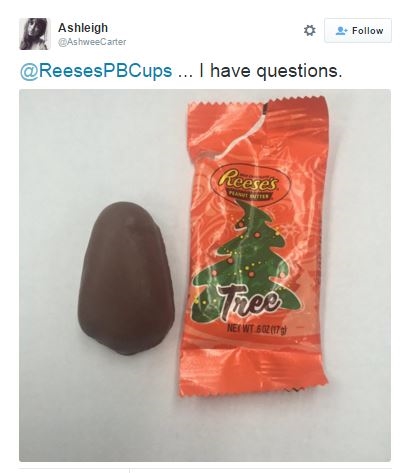 Several tweets showed some questionable-looking Reese's trees. In addition to this example, people wrote, "I feel deceived," and "Does this look like a Christmas tree to you??"
Several tweets showed some questionable-looking Reese's trees. In addition to this example, people wrote, "I feel deceived," and "Does this look like a Christmas tree to you??"
These photos do look more like shapeless blobs than tress.
In response, Reese's shifted the focus with a funny play on appearance. In a second post, Reese's showed four trees with the same slogan; however, all of these examples are more, may I say, shapely than the ones posted by consumers.
Inquisitr called the response "epic."
People are fussy. Critics said Starbucks' polar bear cookies look as though their throats have been cut.
Discussion Starters:
- What are other ways the company could have responded to the criticism? What are the advantages and downsides of other approaches?
- The response worked well, but I could see further criticism because the Resee's example don't quite match what people are finding. Could the campaign have backfired?
Kimpton Updates Rewards Members
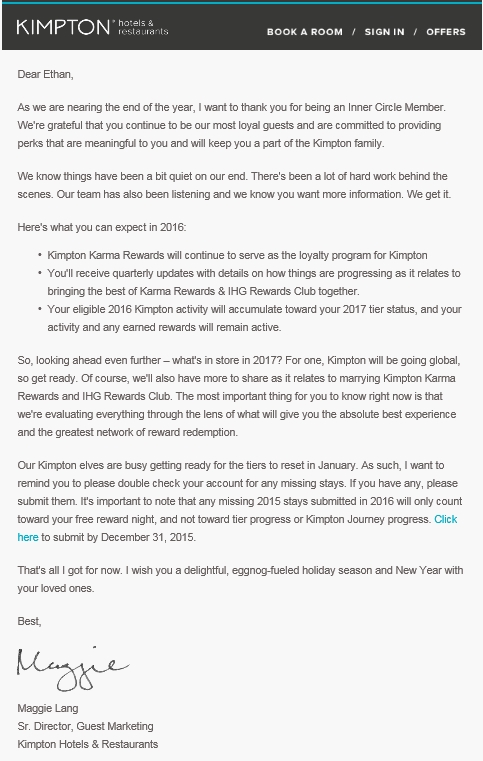 Kimpton Hotels has emailed Inner Circle members to provide an update on the rewards program. Sent by the senior director of guest marketing, the email seems to respond to unanswered questions. With a conversational style, Maggie Lane promises more communication:
Kimpton Hotels has emailed Inner Circle members to provide an update on the rewards program. Sent by the senior director of guest marketing, the email seems to respond to unanswered questions. With a conversational style, Maggie Lane promises more communication:
We know things have been a bit quiet on our end. There's been a lot of hard work behind the scenes. Our team has also been listening and we know you want more information. We get it.
Her conversational style is also evident in the email closing:
That's all I got for now. I wish you a delightful, eggnog-fueled holiday season and New Year with your loved ones.
The approach is interesting and may be a reaction to the news of Marriott's acquisition of Starwood. Much of that news has been about the great opportunities for Marriott Rewards and Starwood Preferred Guest members. IHG's acquisition of Kimpton was announced in December 2014 and hasn't gotten much press since then.
Discussion Starters:
- Using principles from Chapter 4 in the textbook, analyze Kimpton's audience for this email. Who are Inner Circle members, what do we know about them, and so on?
- Assess the conversational style, particularly the word choice. How do you think the audience might react?
Generation Gap: "Offen" or "Off-ten"
 A clever piece in The Chronicle analyzes current pronunciation of often. Ben Yagoda questions recent pronunciations with the t.
A clever piece in The Chronicle analyzes current pronunciation of often. Ben Yagoda questions recent pronunciations with the t.
He starts by identifying an example in the podcast "Reply All," hosted by P.J. Vogt: "...Vogt is young (I would judge in his early 30s), and speaks with vocal fry, list lilt, uptalk, and, generally, a pronounced Ira Glass-esque lack of slickness."
Turns out, the t-pronunciation is a recent phenomenon. Early dictionaries indicate no t, but two 20th-century dictionaries indicate a shift, with one calling the pronunciation "vulgar," "certainly unnecessary," and "an affectation of refinement." Yagoda provides interesting evidence in speech from 12 "My Fair Lady" musical versions.
Yagoda concludes that younger people pronounce the t. He has seen a shift in pronunciation among his students and increasingly sees-as I do- "oftentimes" appearing in writing assignments. Good grief.
Discussion Starters:
- How do you pronounce often? Do you notice a generational difference?
- Assess Yagoda's evidence. What would strengthen his argument?
Study: Ending Texts with a Period Is "Truly Monstrous"
 A Washington Post article doesn't hold back in interpreting a Binghamton University study. Published in Computers in Human Behavior, the study compared receivers' reactions to periods used in handwritten and text messages:
A Washington Post article doesn't hold back in interpreting a Binghamton University study. Published in Computers in Human Behavior, the study compared receivers' reactions to periods used in handwritten and text messages:
We ask whether punctuation-specifically, the period-may serve as a cue for pragmatic and social information. Participants read short exchanges in which the response either did or did not include a sentence-final period. When the exchanges appeared as text messages, the responses that ended with a period were rated as less sincere than those that did not end with a period. No such difference was found for handwritten notes. We conclude that punctuation is one cue used by senders, and understood by receivers, to convey pragmatic and social information.
A New York Magazine article calls the period in a text message "the 'k' of punctuation." Apparently, "k" is highly offensive, indicating a power trip, laziness, and other terrible qualities.
The text period has come up before in BizCom in the News. A Mashable article quoted a linguistics professor at the University of Pennsylvania:
"In the world of texting and IMing … the default is to end just by stopping, with no punctuation mark at all. In that situation, choosing to add a period also adds meaning because the reader(s) need to figure out why you did it. And what they infer, plausibly enough, is something like 'This is final, this is the end of the discussion or at least the end of what I have to contribute to it.'"
The Binghamton University study proves it.
Discussion Starters:
- How did we get here-where our smallest punctuation mark has taken on such grave meaning?
- What's your view of the "k" in texts? Do you share the criticism?















